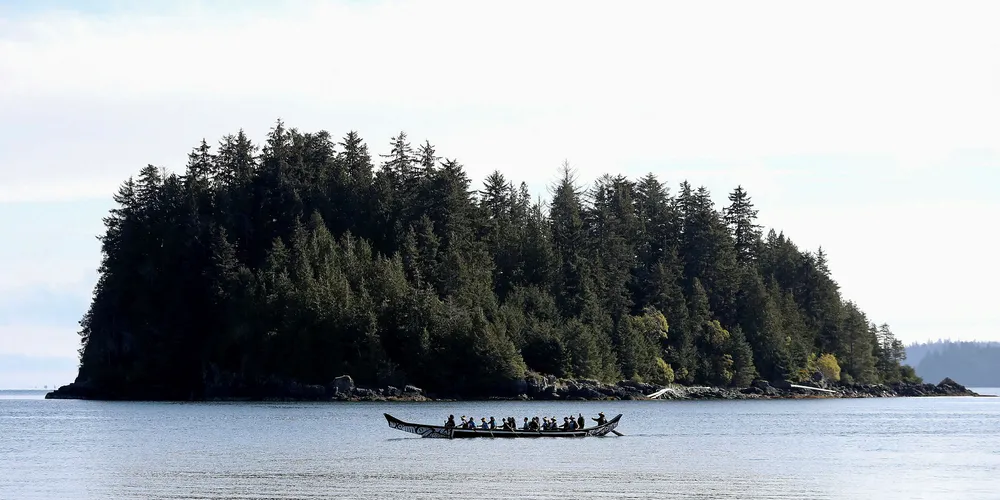Tide turns for NaiKun as elections and Dong boost BC offshore wind
IN DEPTH | With a renewables-friendly BC government, larger turbines on the horizon and now Dong Energy on board, NaiKun's CEO says offshore wind is set fair in the Canadian province

Despite failing to win an off-take deal in BC’s last major clean-energy tender in 2010, NaiKun has continued investing in its offshore project, located in the Hecate Strait between mainland B.C. and Haida Gwaii (formerly known as the Queen Charlotte Islands).
Siemens – on the hunt for its first North American offshore order – was named exclusive turbine supplier in 2012, and two years later NaiKun obtained an extension of a key environmental permit. More recently, however, progress has been difficult to discern.
But last week came perhaps the most promising sign to date: Denmark’s Dong, the closest thing the global offshore wind industry has to a market-maker, threw its weight behind NaiKun’s project, now called the Haida Energy Field.
Dong has the exclusive right to negotiate a joint development deal with NaiKun, and is also in talks to establish a long-term partnership with the developer.
Other investors had also become interested in the project, says NaiKun CEO Mike O’Connor. “For a modest investment on their part … [Dong] has the exclusive right to move forward.”
Dong recognised the fundamental advantages of the Haida project, including the site’s tremendous wind resource, with an expected capacity factor above 60%, and the eventual need for its power in BC’s growing economy, O’Connor says.
The project is the most advanced along North America’s west coast, having secured environmental permits at both the provincial and federal level.
It’s also probably no coincidence that Dong signed up just a few months after the biggest shakeup in BC politics in a generation, with the centre-right BC Liberal Party losing its 16-year-old control of the legislature to a left-wing coalition of the New Democrats and Greens.
Under new Premier John Horgan, “we now have a government that strongly supports … the development of a renewable-energy programme, and they’re not just going to talk about it”, O’Connor says.
The most consequential energy decision looming for Horgan is whether to pause or even scrap the 1.1GW Site C hydropower that state-owned utility BC Hydro is building on the Peace River, among the largest hydro projects under construction in the developed world.
Horgan promised that if elected he would review the controversial project, which has clouded the prospects for other renewables like wind and solar in the province.
Another complicating factor is the prospect of liquefied natural gas exports from BC, which several years ago promised to inject huge investment – and power demand – into the province, but has since stalled on weak global LNG prices.
Under any scenario NaiKun faces a “twisty road” to an off-take deal, O’Connor acknowledges, with political intervention of some kind necessary in a market controlled by BC Hydro.
“I don’t think there’s a prescribed way to move forward,” he says, but the government has an “enormous utility that can facilitate” any market direction it chooses for renewables.
“If there’s a will – and we think there is – they’ll find a way forward.”
Meanwhile, with Dong behind it, NaiKun expects its conversations with the government to take on a new light.
“But that’s now gone,” O’Connor says. “We’ll be formatting our strategy on how to move all these parts forward in the next few weeks.”
One advantage NaiKun has today that it didn’t have seven years ago is the rapidly falling cost of offshore wind.
The winning projects in the 2010 tender contracted for C$150/MWh or less, and “at that time our number was C$200 [per MWh]”.
But thanks to advances in offshore wind technology, including turbines that would be 8MW or larger by the time the Haida project got built, NaiKun now believes it could sell power for “way under” $100/MWh.
The water depths in the Hecate Strait would be mere 12-15 metres, allowing for the use of monopile foundations. While the project’s first phase has typically been pegged at 400MW, it’s permitted for 110 foundations – meaning it could be substantially larger.
“We have the capability to scale up the first phase to pretty near any size,” O’Connor says. “If the first phase is required to be 250MW, and then 5-10 years down the road there’s a requirement for another 250-500MW, all of that is possible and quite practical.”
“This resource is one of the biggest and strongest in the world – it’s going to be developed. I want to be there when it happens.”
“I think we now have two partners that will give us chance to move it forward in the months ahead.”
(Copyright)